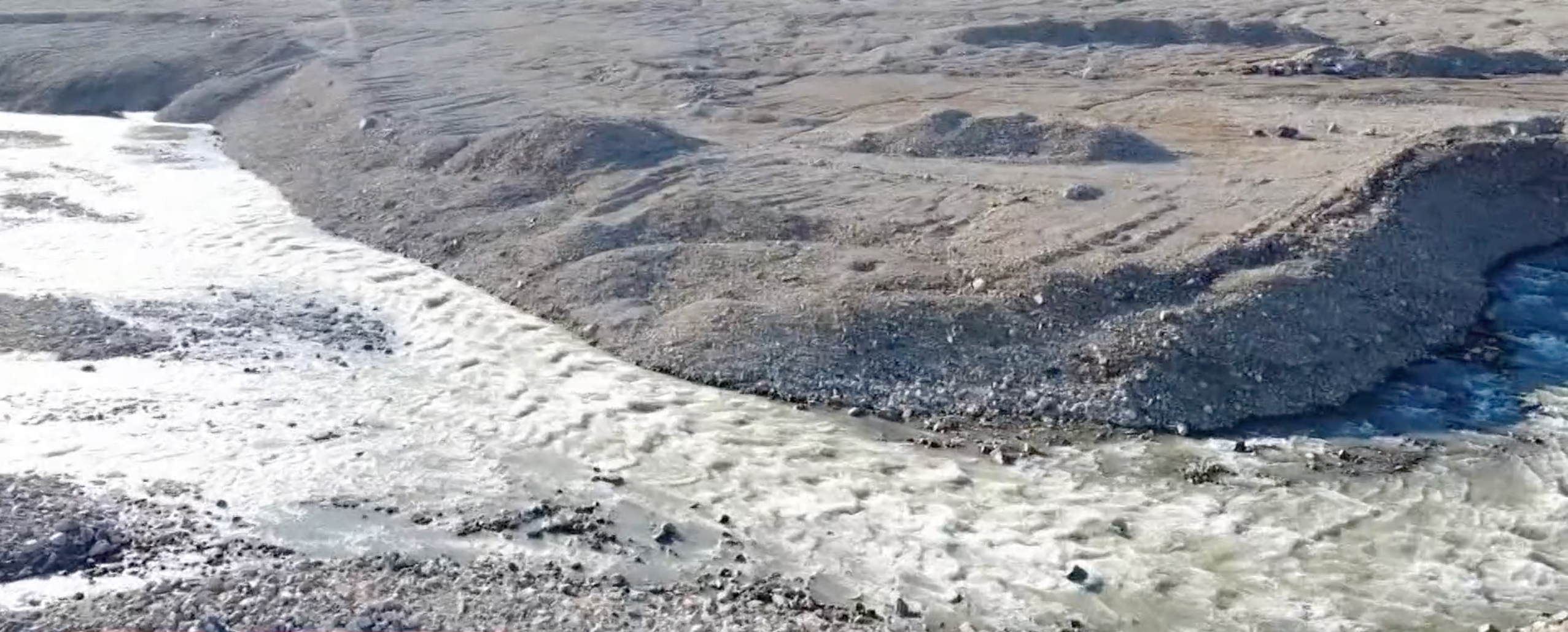Satellite images capture intense melting from Greenland ice sheet after extreme heat
Northern Greenland, which is usually well below freezing, reached 60F this month
Satellite imagery is showing just how intense a recent heatwave Greenland has been.
A photo from the EU’s Copernicus satellites shows massive tons of sediment pouring into a fjord – a glacial bay leading into the ocean – as ice from the island’s vast ice sheet melted this month.
Recent heat in nothern Greenland melted nearly six billion tonnes of ice in just three days – enough water to leave the entire state of West Virginia standing in a foot water, scientists said.
Temperatures in the Arctic region have recently hit 60 degrees Fahrenheit (nearly 16 degrees Celsius). Northern Greenland normally remains below freezing, even in summer, with maximum temperatures around 32F (0C).
The extreme heat led to extensive melting from the island’s gigantic ice sheet, between 15-17 July, sending billions of gallons of freshwater into the ocean. Footage from CNN showed water streaming across the landscape.
Ice sheets are melting because of excess heat trapped in the atmosphere, largely caused by emissions from burning fossil fuels, and fuelling global sea level rise. If Greenland’s entire ice sheet were to melt, the world’s oceans would rise by seven metres (23 feet), Nasa says.
“The northern melt this past week is not normal, looking at 30 to 40 years of climate averages,” Ted Scambos, a University of Colorado scientist with the National Snow and Ice Data Center, told CNN.
Greenland has faced a run of extreme summer temperatures. In 2019, Earth’s third hottest year on record, Greenland’s ice sheet lost an average of one million tonnes of water every minute. Over the whole year, that’s enough to fill up 200 million Olympic-size swimming pools.
Climate scientists are gravely concerned about the lost of ice from the polar regions - particularly in the Arctic which is now warming at four times the rate of the rest of the world.
Greenland, the world’s largest island between the Atlantic and Arctic Oceans, is on pace to lose more ice this century than in any other 100-year period for 12,000 years.

There are concerns that the island’s ice sheet is approaching a “tipping point”, where the ice destabilizes enough to accelerate even more melting.
Melting ice sheets, along with melting glaciers and ocean waters that are expanding due to increasing heat, is causing sea-level rise around the world.
Even if the world takes aggressive action to eliminate greenhouse gas emissions, the oceans are expected to rise by half a metre (1.6ft) by the end of the century, the UN’s Intergovernmental Panel on Climate Change, the world’s leading climate authority, says.
Sea level rise caused by the climate crisis will have long term repercussions. Under even the best-case emissions scenario, sea levels could rise up to three metres (10ft) by 2300.
If we continue to pump emissions into the atmosphere unabated, seas could rise nearly a metre (3ft) by the end of this century and over six metres (20ft) by 2300, the IPCC warns.
Such changes would be enough to decimate coastal cities around the world, including New York City, Miami and Shanghai, along with vast areas of low-lying countries like Bangladesh — home to tens of millions of people.
Join our commenting forum
Join thought-provoking conversations, follow other Independent readers and see their replies
Comments


Bookmark popover
Removed from bookmarks